Renting a car in Japan is the best way to get off the beaten track and see parts of the country most tourists miss. We’re sharing our top tips to help you get a car rental and feel comfortable driving in Japan.
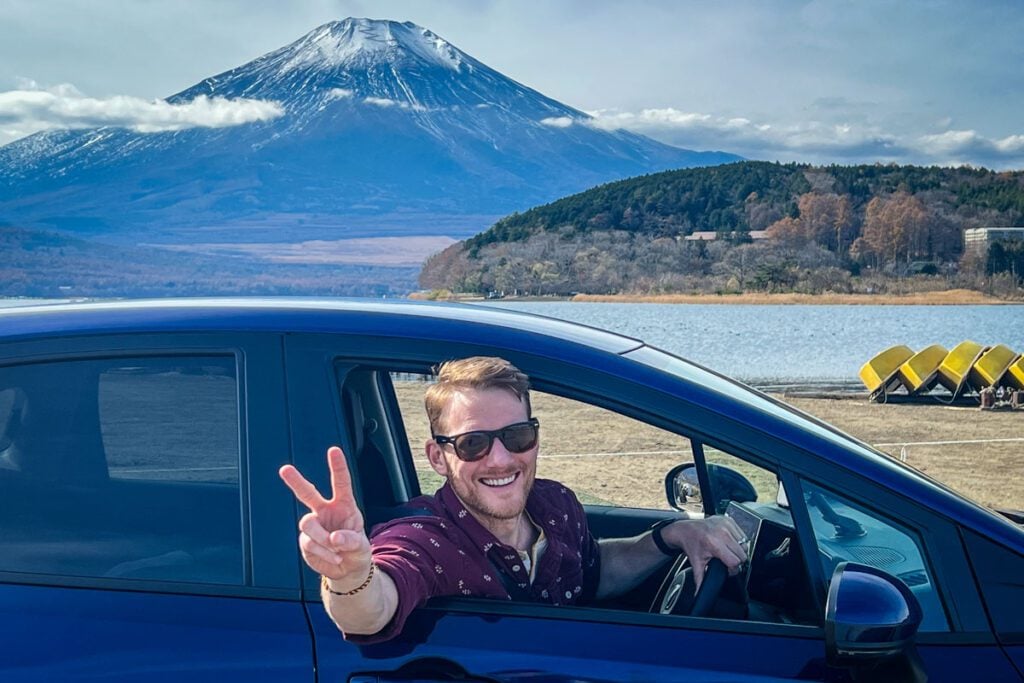
Renting a car in Japan allows you to travel at your own pace and avoid the crowds. We’ve had some of our best adventures in tiny towns across the country that are easily accessed by car, but not by public transport.
It’s also a lot easier to drive in Japan than you would expect (yes, even driving on the left!). But there are a few things you need to know before you get behind the wheel of a Japanese rental car.
We’re breaking down the exact cost of renting a car in Japan, as well as answering some of your most frequently asked questions. Plus, we’re sharing our top tips to save you money and headaches.
Article Contents
- Why rent a car in Japan
- Reasons not to rent a car
- Cost of renting a car in Japan
- Rental car insurance
- Requirements for renting a car in Japan
- Tips for renting a car in Japan
- Driving in Japan tips
- FAQs
Why rent a car in Japan?
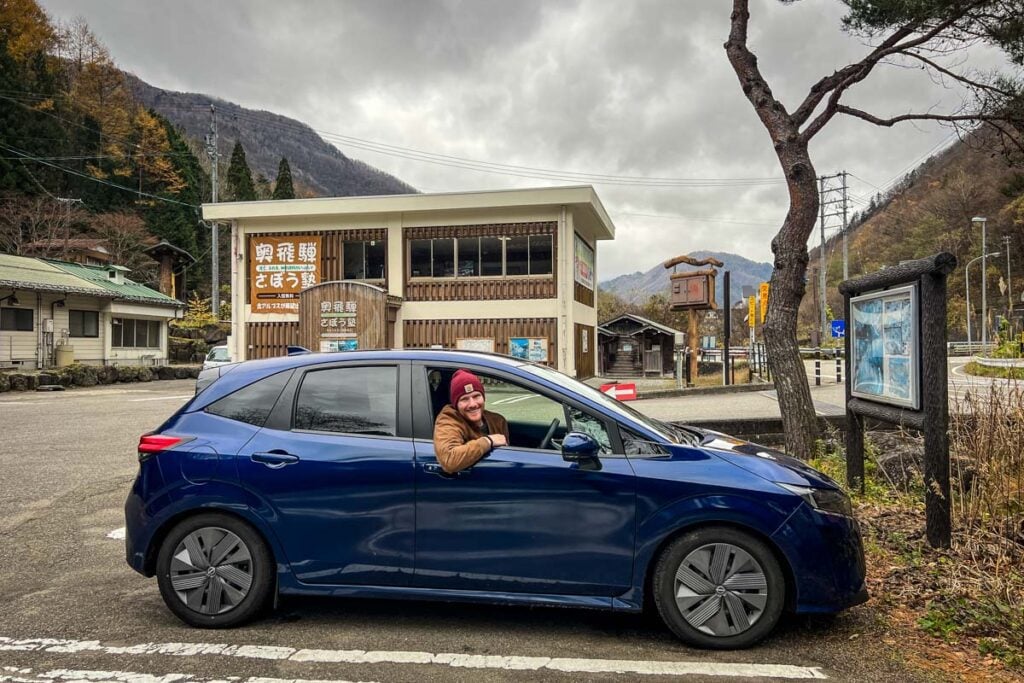
There are so many positives to renting a car in Japan, but we know it can be tricky decision, especially since public transport is so easy. Here are some of the top reasons to get a rental car:
1. You can get off the beaten track
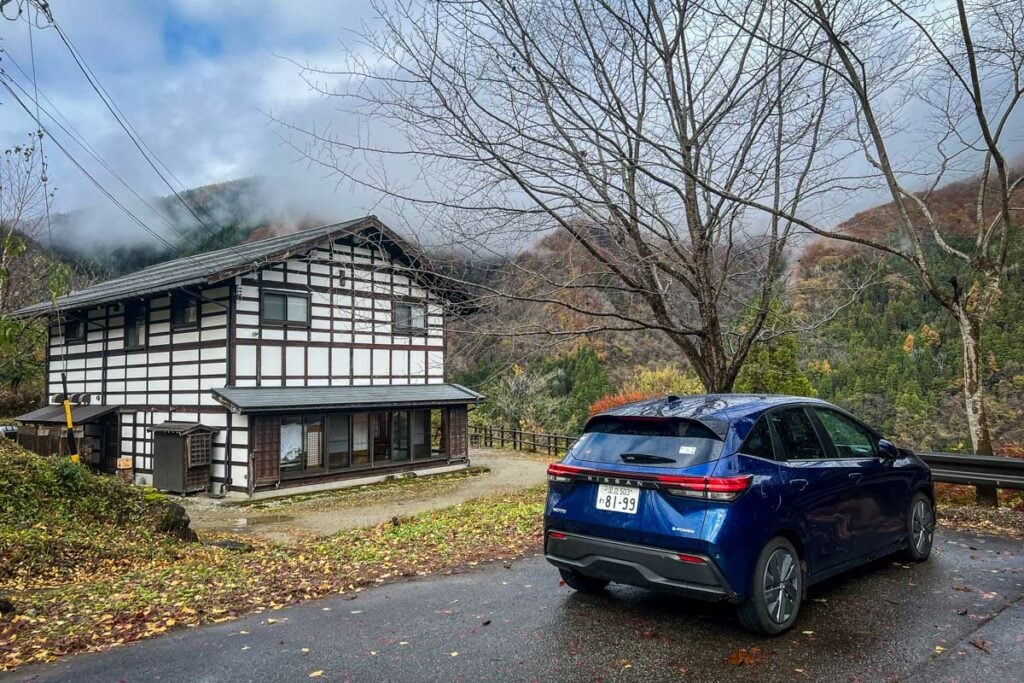
Japan is one of the busiest countries we have ever been to, and it seems to be getting more and more crowded each year.
By renting a car in Japan, we were able to escape the chaos of the major cities and tourist areas and discover hidden gems throughout the country.
We drove an hour outside of Nikko to a magical onsen hotel. We stayed at a remote 120-year-old farm-style ryokan outside of Takayama, where we ate locally-sourced meals and made our own soba noodles.
Getting to these places would have been nearly impossible (or taken triple the amount of time) if we didn’t have a rental car and had to rely on trains and buses.
Before we get any further, I’m sure you’re wanting to know how to book your rental car for Japan. We always book through Booking.com (formerly RentalCars.com) because they have the best deals and are very reliable.
We found Nissan Rent a Car from Booking.com and booked a hybrid car for our trip. If you’re ready to book, start searching now and use their filters to find the right car for your travels.
2. You can travel at your own speed
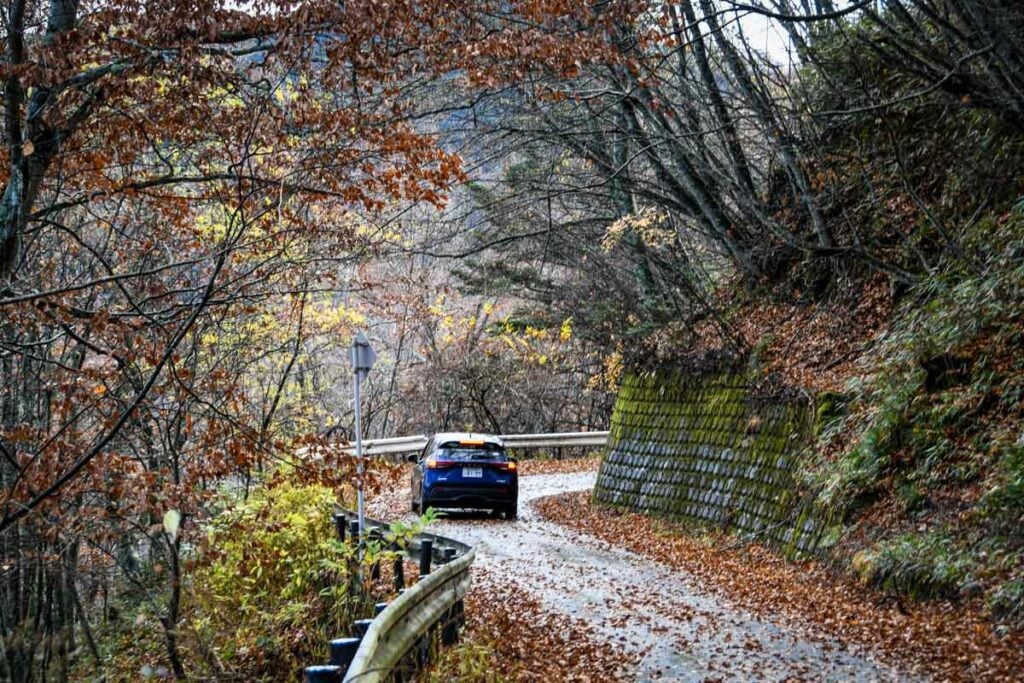
Everything is on time in Japan – like to the second. From train departures to bus routes (and even happy hours), nothing deviates from the set schedule. On the off chance that transportation is delayed by a couple of minutes, you will be informed and apologies will be given.
We love the preciseness of Japanese culture, but sometimes it’s nice to be able to take your time and not have to worry about a hard deadline to catch your train.
Having a rental car allowed us to be more flexible with our schedule, which we really liked. It was especially nice when traveling in Japan with our nearly 2-year-old daughter.
3. Traveling with children is easier
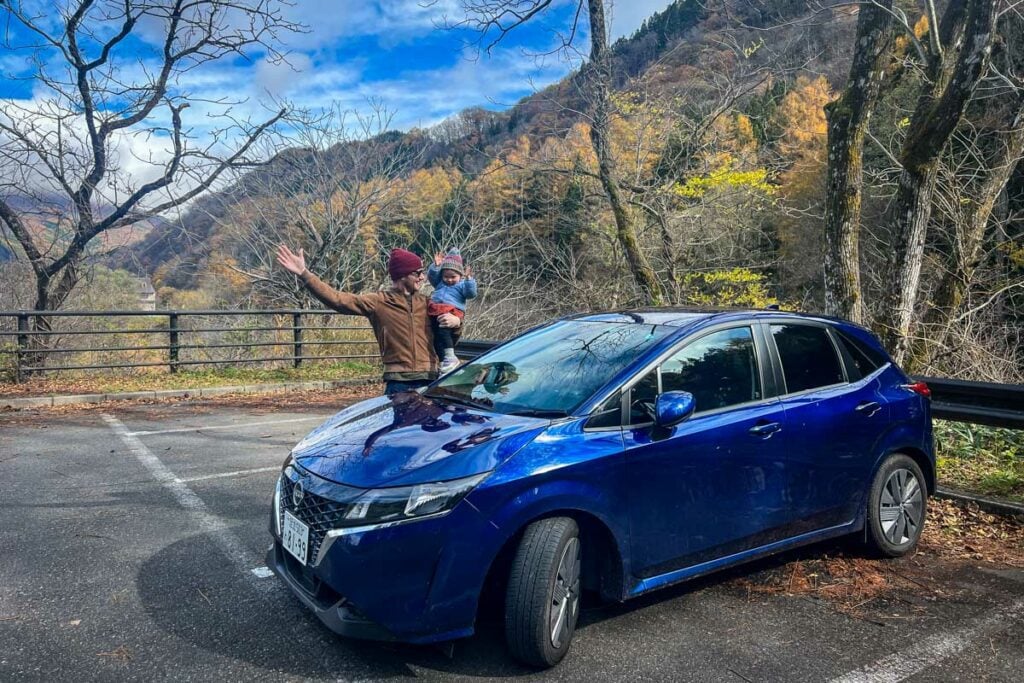
Ever since having a child, we’ve sometimes found it easier to rent a car in the destinations we visit.
For being so small, babies come with a lot of extra travel gear. It’s way more convenient to have a spot for all your luggage in a rental car than trying to drag it all (and a stroller) onto the train and through stations.
Not only are you able to have everything you need in your vehicle, you can also feed your kiddos snacks and meals when they get hungry. Eating on public transportation in Japan is typically considered rude and frowned upon.
If your little ones get too wiggly in the car and need a break, you can easily pull over and walk around for a little while. You can’t really pull over a train so your kids can release some energy.
Psst! We have a whole guide dedicated to traveling in Japan with kids that is full of useful information (and encouragement!).
4. Rental cars might be cheaper than trains
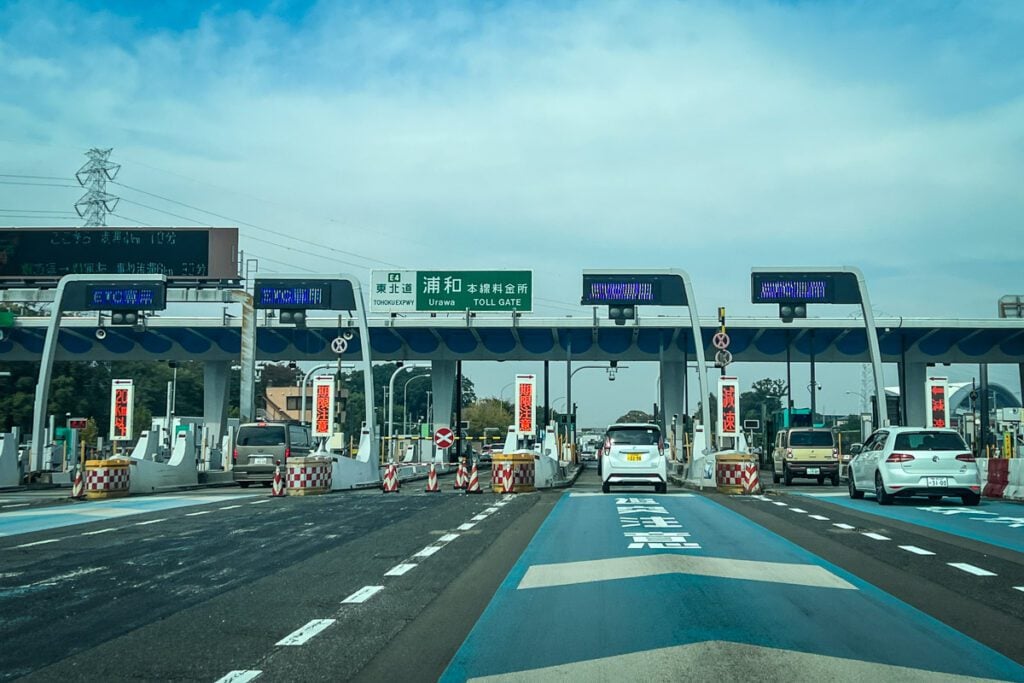
Before 2023, the cheapest and easiest way to travel around Japan as a tourist was to buy a Japan Rail Pass which gave you (nearly) unlimited train travel throughout the country.
However, in October 2023, the Japan Rail Pass price shot up over 60%. Now, depending on your destinations and how long you plan to be in Japan, it may make more financial sense to rent a car.
Later in this article, I’ll break down the costs of our rental car and compare it to traveling with a JR Pass, but here is a sneak peak:
- It cost us roughly $73 USD per day for 2 adults and a baby to rent a car in Japan, compared to…
- $82.57 USD per day for 2 adults with two 14-day JR Passes.
5. Driving in Japan is easier than you think
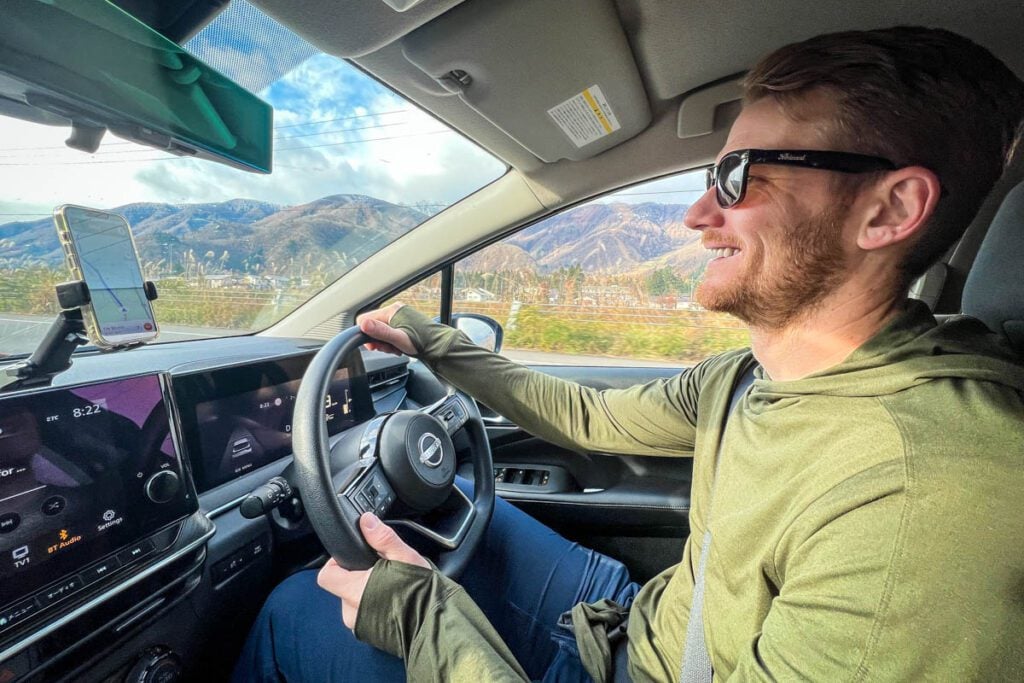
Okay, yes, this one should come with an asterisk. Driving in major cities in Japan can get a little chaotic with all the traffic, one-ways, and excessive signage. But driving on the expressways, in small towns, and in the rural areas of Japan is pretty easy and can actually be lots of fun.
Most of the navigational signs will have both Japanese and English and, for the most part, Japanese drivers are courteous and safe.
We recommend having a SIM card or a WiFi hotspot so you can navigate with a GPS or Google Maps.
“But what about driving on the left side of the road?”
Yes, for us North Americans and others who drive on the right, it can take a bit to adjust to the other side.
But I also say this: in general, when you drive anywhere, you are basically following the person ahead of you. If you think about that, it makes driving on any side of the road much simpler!
6. It’s fun!
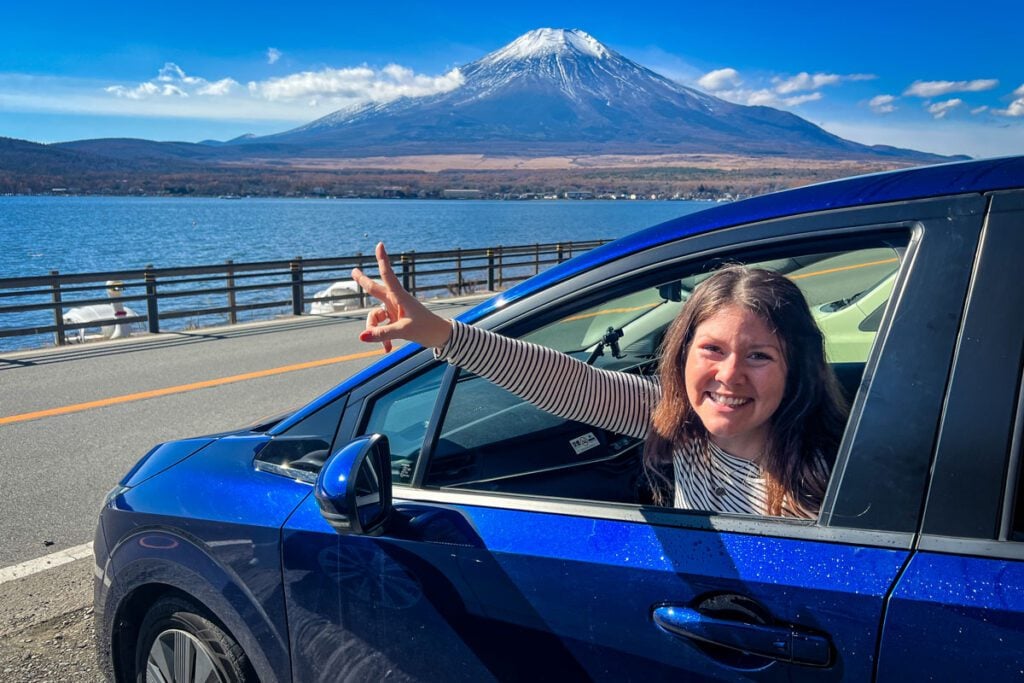
There’s just something about road trips that’s so much fun! Stock up on snacks, crank some tunes and sing aloud, or listen to a podcast with your travel buddy. No headphones needed!
When you rent a car in Japan you’ll have your own space to listen to whatever you want, turn on the AC or roll the windows down – whatever floats your boat (or car!).
Reasons not to rent a car in Japan
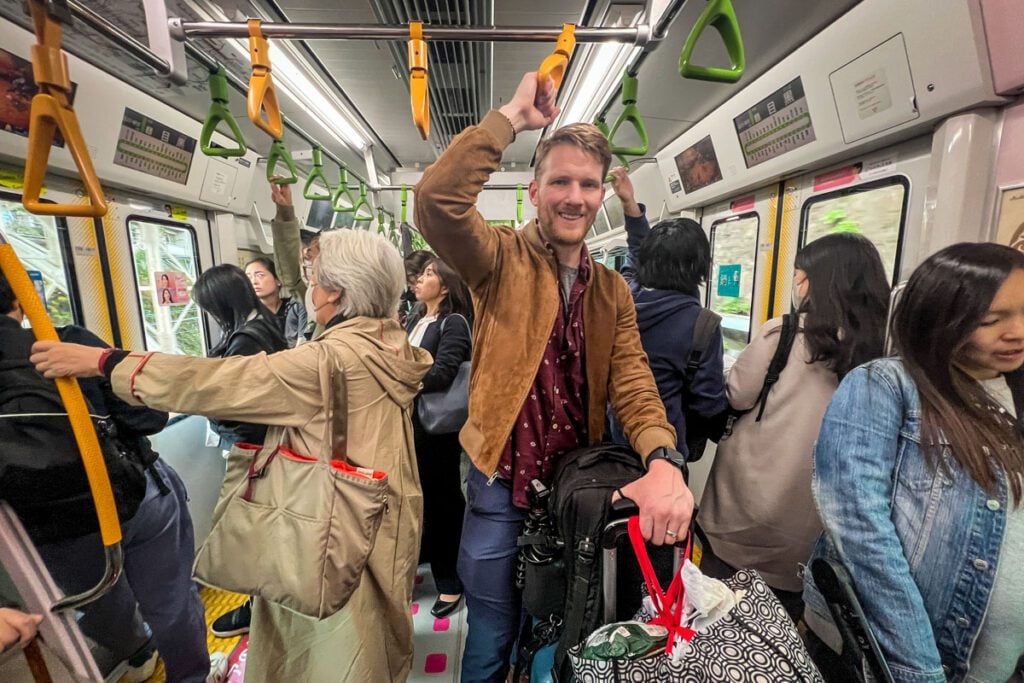
While we think getting a rental car is worthwhile for certain trips to Japan, there are some cases where public transportation is the better option. Here are some reasons not to book a rental car:
- If you’re only going to three or fewer destinations in Japan, it may not be necessary to rent a car. Japan is well connected by trains and if you’re just going to a few destinations then it probably wouldn’t make sense to get a car.
- If you’re only visiting big cities, like Tokyo, Kyoto, and Osaka, you will not need a rental car. These cities have great public transportation and it is easy to get around. Plus, parking in these cities can get pretty expensive, so you might as well ditch the car.
- If you’re traveling solo, the cost of renting a car will probably be more than a JR Pass or even just buying individual train tickets.
- If you have lots of luggage, a rental may not have enough space. Cars in Japan tend to be quite small and do not accommodate large amounts of luggage. We rented a Nissan Note, which is a 4-door sedan. We had two large, hard-sided suitcases, a stroller, a car seat, and two small backpacks. It was a bit tight, but still comfortable. Any more than that would be pushing it.
- If you’re really nervous about driving on the left side of the road, you might want to reduce your stress and opt for a JR Pass. We believe it’s easier than you think to drive on the opposite side of the road, but we know it can make some people really anxious and that’s totally understandable. No one wants to be anxious on their travels!
How much does a car rental in Japan cost?
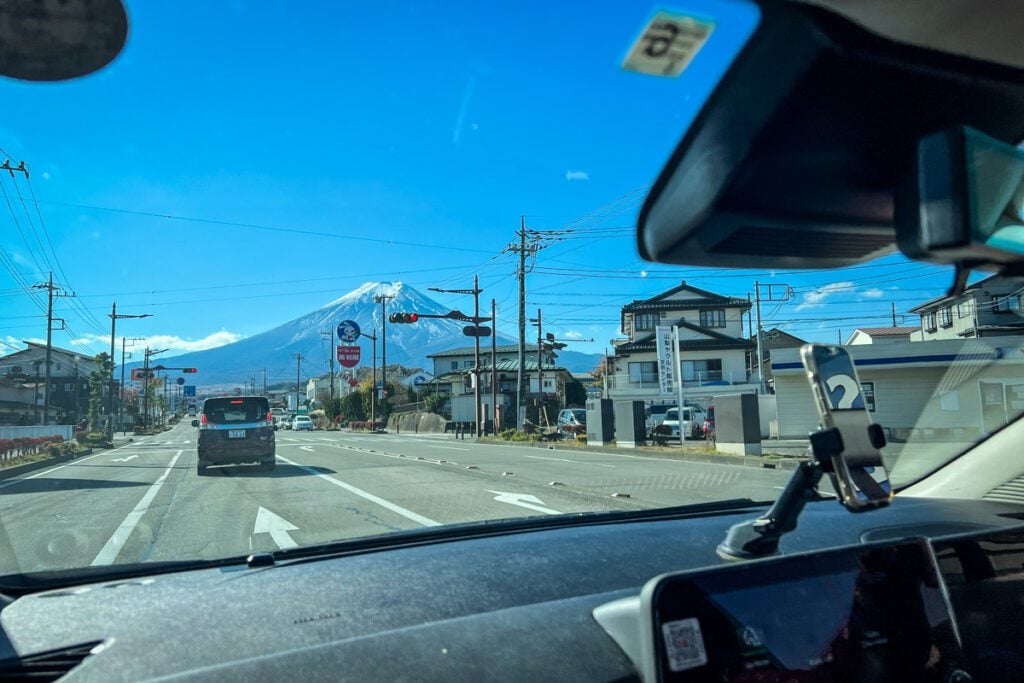
There are all different types of cars to rent in Japan, but the most common ones are small sedans. Larger vehicles like vans or SUVs will cost more compared to a sedan. We personally booked a Nissan Note 4-door hybrid sedan from Nissan Rent a Car at Shinjuku Station.
When we traveled to Japan in November 2023, our 15-day rental car cost a total of $822 USD, making it about $54.80 USD per day for two adults and a baby.
Of course, there are additional expenses, like insurance (which was covered by our credit card), toll fees (totalled about $125 USD), and gas/petrol (about $150 USD).
Our overall cost for renting a car in Japan for 15-days came to $1,097 USD, roughly $73 USD per day.
Compared to a Japan Rail Pass: In 2024, a 7-day JR Pass costs around $360 USD per adult and a 14-day JR Pass costs about $578 USD. If you’re traveling with a partner, you’ll of course have to double that expense.
So if you break that down per day, for two adults on a 14-day JR Pass it will cost about $82.57 USD per day.
Comparing the per day price, it was cheaper for us to rent a car in Japan than to buy the JR Pass for our 2023 trip.
Note on Renting a Car Seat: Since we were traveling with our nearly 2-year-old daughter, we called Nissan to see how much a car seat would cost to rent. They told us it would be roughly $10 USD per day to rent the car seat, totalling $150 for the trip. We decided to bring our own travel car seat instead.
Do I need rental car insurance in Japan?
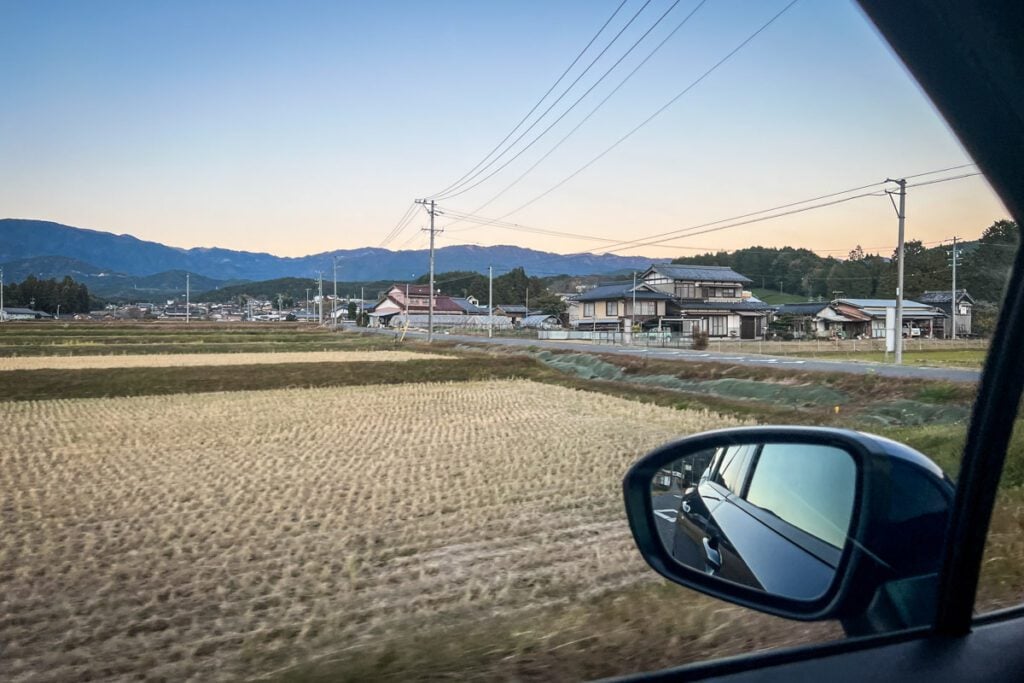
Japan car rental companies are required to include liability and damage insurance in the price of the rental.
If you wish to purchase additional coverage, you can do so when you check out the car. This coverage and additional costs will vary depending on the company you choose to rent from.
If you have more questions on additional coverages, we encourage you to call or email the rental car company.
Requirements for renting a car in Japan
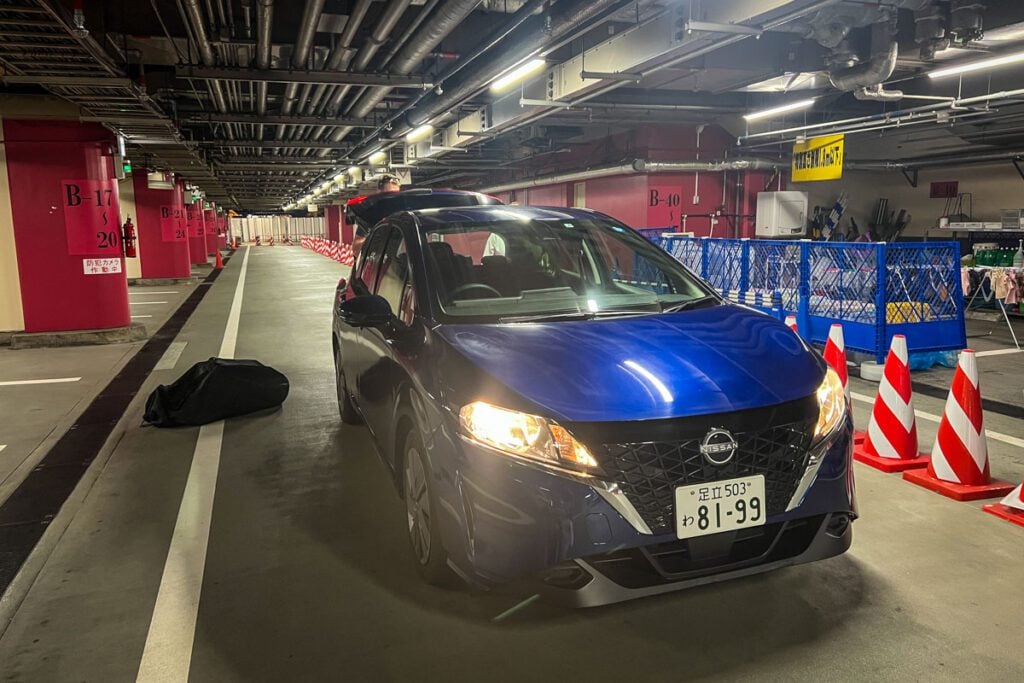
There are two requirements to rent a car in Japan.
You must be 18 years or older
The legal driving age in Japan is 18 years old.
You need an International Driver’s Permit (IDP)
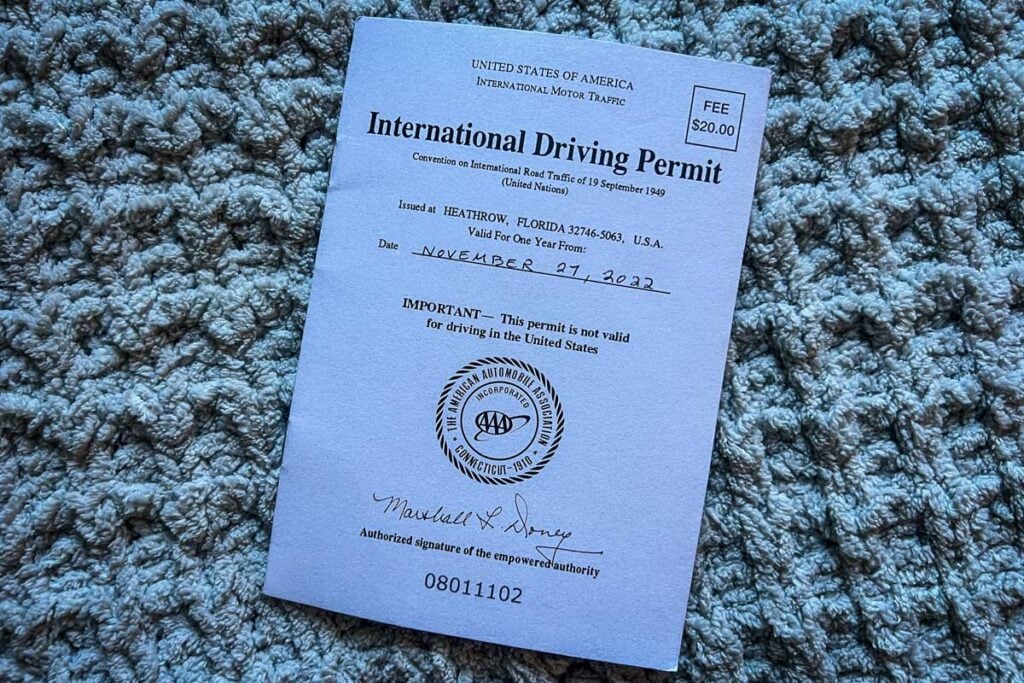
To rent a car in Japan, you will need your driver’s license and an International Driver’s Permit (IDP). An IDP basically translates your driver’s license into several languages, including Japanese. The rental car staff will ask to check your IDP before they hand over the keys.
To get an IDP, bring your driver’s license, two passport photos, and the $20 USD permit fee to your local AAA store (you can get your passport photos taken at the AAA store as well). Fill out the IDP application, pay the fee, and they will complete the rest.
The IDP is valid for 1 calendar year.
Tips for renting a car in Japan

These tips are pretty universal whether you’re renting a car in Japan, Europe, or the United States. We hope they are helpful to you as you plan your trip.
1. Take pictures of the outside of the car before driving
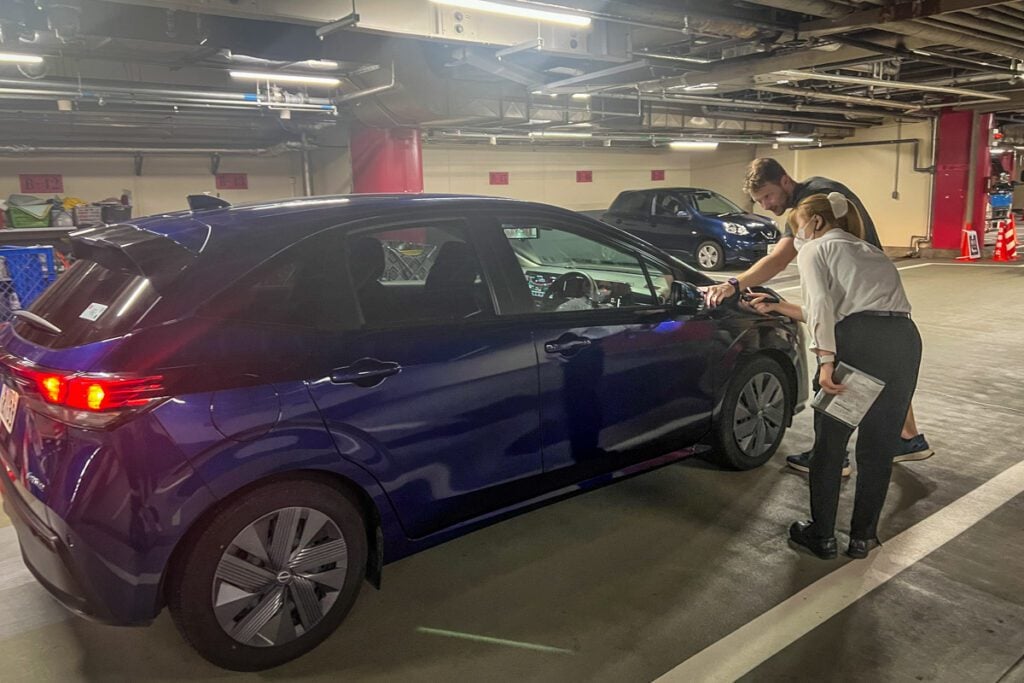
Get up close and personal. Take photos on your cell phone of any scrapes and dents, no matter how small. And don’t forget any little cracks on the windshield. This way, none of these issues can be blamed on you.
We’ve never had to use these photos, but it’s a good idea to have yourself covered just in case!
2. Rent your car online
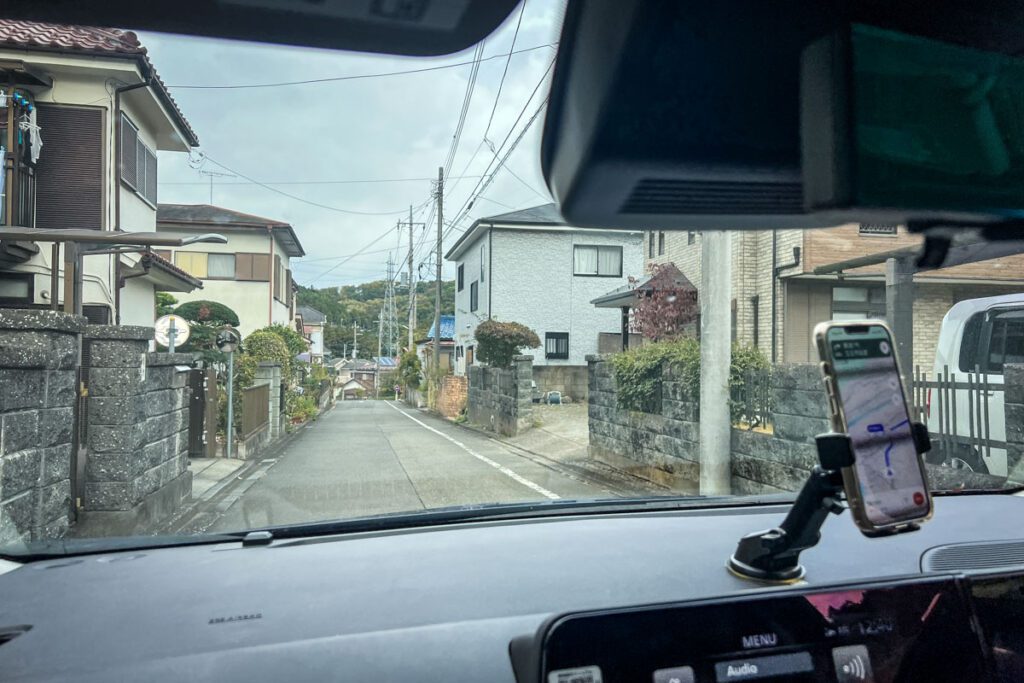
Since the online booking platforms reserve several cars and pay the company whether or not someone actually rents them, they get a great rate and can pass the savings onto you.
It is almost always cheaper to book online rather than walking into a store. I never would have believed this until we walked into a car rental shop in Costa Rica and were quoted nearly 3 times as much for the same vehicle as what was listed online!
Plus, you won’t need to worry whether there will be availability if you book it ahead of time.
3. The longer you rent, the less you pay per day
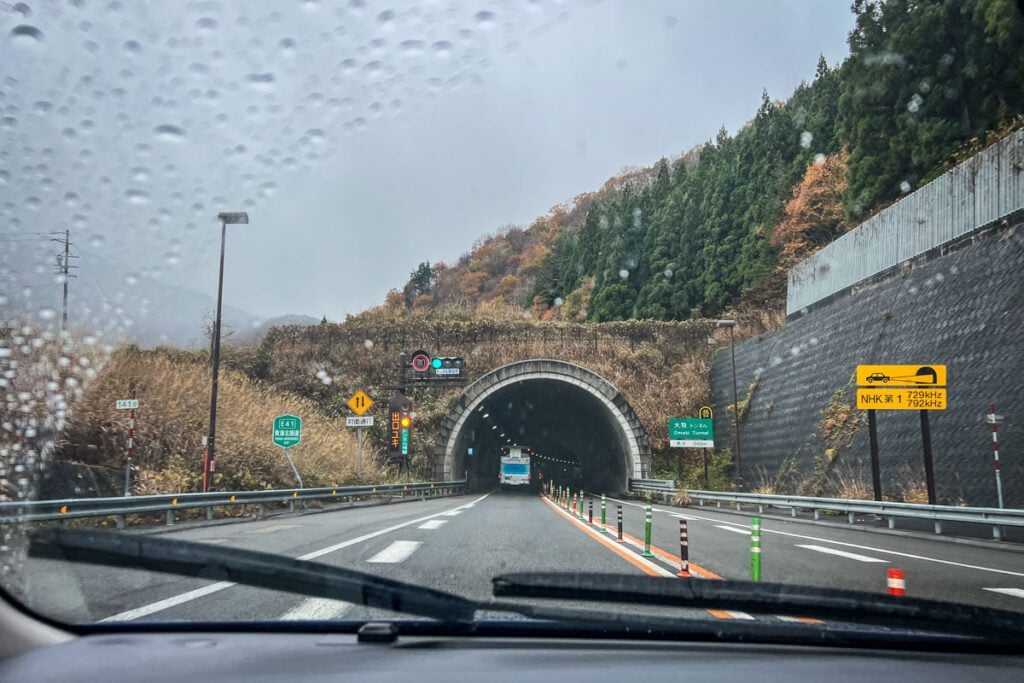
If you compare the cost of a single day rental to the cost of renting a car for multiple days or weeks, you’ll almost always get a better deal for the longer term.
Don’t take our word for it, see for yourself!
4. Download offline navigation
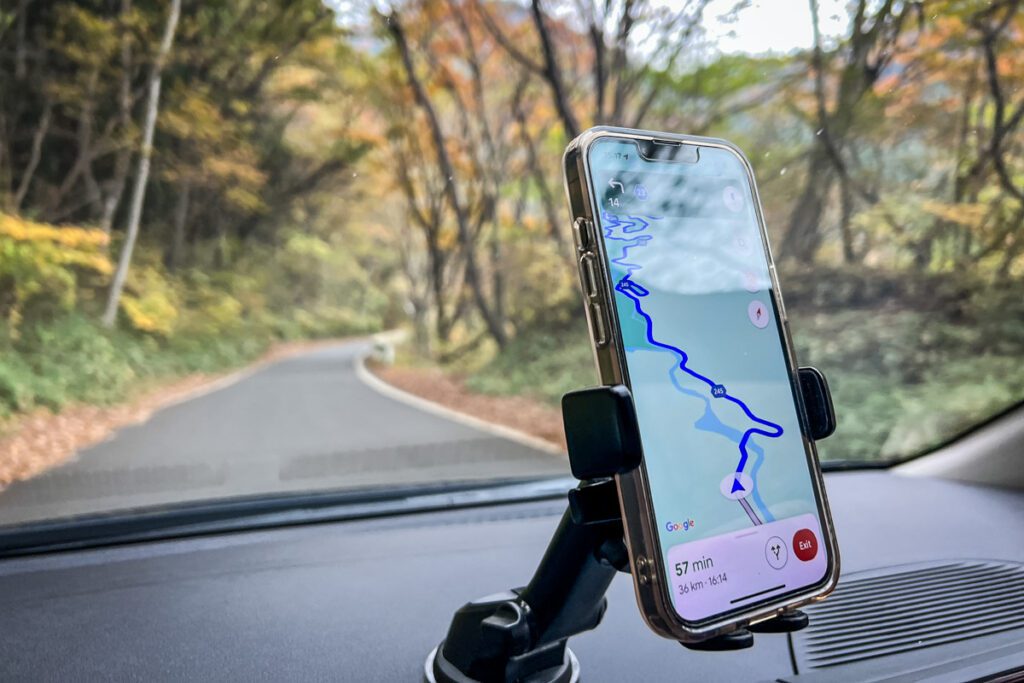
It’s important to download the map before your trip so you can find roads, restaurants, and attractions even if you don’t have cell phone service.
For this, Google Maps is amazing. Not only can you pin all the points of interest along your route, but it will also show your current GPS location even when you’re not within cell signal. To enable this feature, keep reading…
How do you Download Google Maps Offline?
It’s super simple! Just follow these steps:
- Sign in and open the Google Maps app (it’s connected to your Gmail account).
- Move the map so that Japan, or the portion you want to download, is in the frame.
- You’ll see a white bar at the top of the screen. Tap on your profile picture or the letter of your profile.
- Tap “Offline Maps”.
- Tap “Select your own map”.
- Move the map so the area you want downloaded is in the blue frame. Make sure you’re in WiFi, and click the “download” icon.
The map data from this region will now be on your phone, and can be accessed even when you have no cell signal. You’ll even be able to see your current GPS location as long as you have it authorized. (Settings > Google Maps > Location > select “Always”)
Maps.Me is another great map option, and we use it a lot to find hiking trails and things that aren’t always marked on Google Maps. You might want to download both maps before your trip.
Hot Tip: Bring a phone mount for the rental car (and a charger cord) so you have your navigation at eye level.
5. Get a SIM card
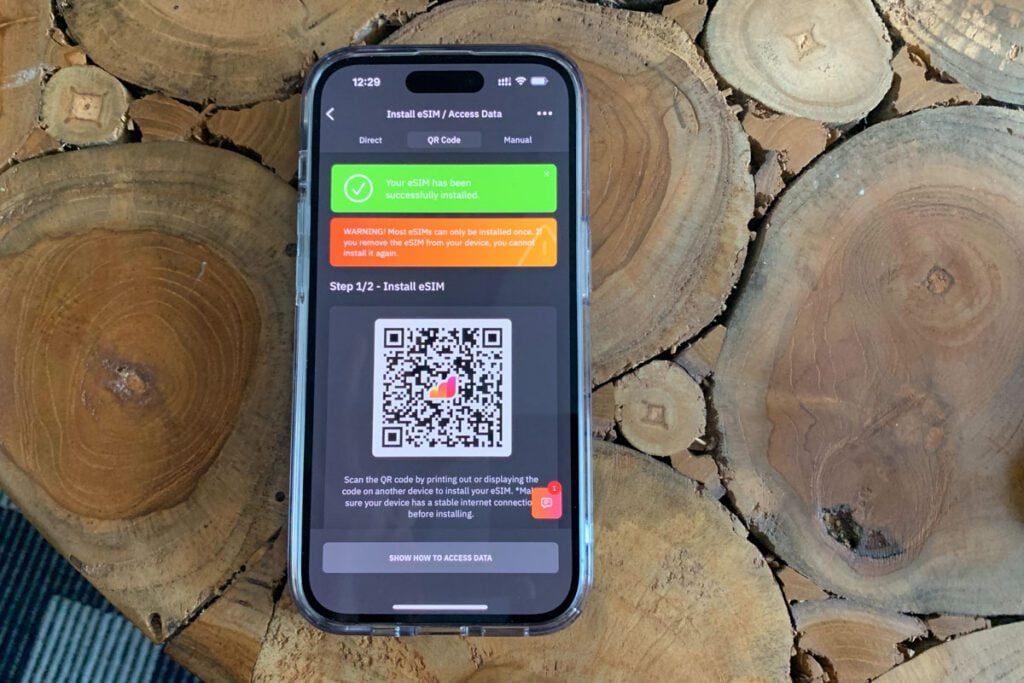
A local SIM card is invaluable when you’re traveling abroad. Not only does it help you avoid costly roaming or data charges, it also provides a safety net and keeps you generally more connected, providing local cell and data coverage while on the road.
Just make sure you’re traveling to Japan with an unlocked smartphone in order to use the local service.
Our favorite way to get data in a foreign country is by using Airalo. If you can get by with data only (no calling, but you can use WhatsApp), this is a great value at just $18 USD for 10GB, valid for 30 days.
Airalo is an app you download that offers eSIMs in nearly 200 countries. It’s super easy to use and makes arriving in a new place much more seamless.
Just download the app to your phone, choose the country and data package that best suits your travel needs, and install the eSIM. Voila! It offers instant connectivity, and is easy to top up with more data when you need it.
Don’t miss this! We have a list of all the best apps for traveling in Japan that will be super helpful as you plan your trip.
6. Combat car sickness
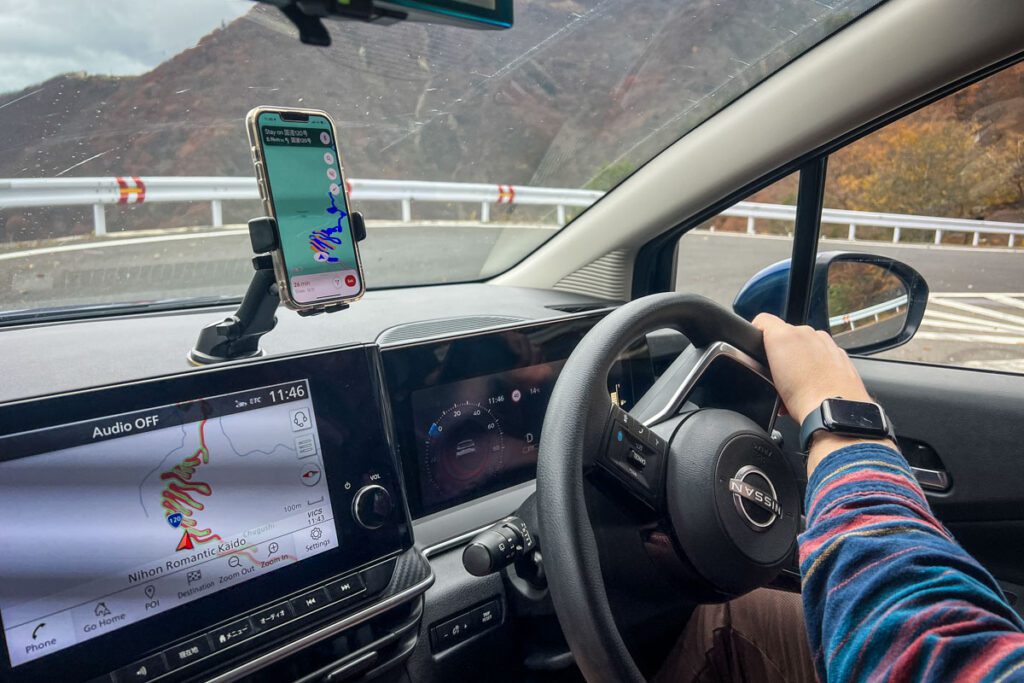
If you’re someone who suffers from the occasional motion sickness, zig-zagging through Japan’s mountains is not an ideal situation.
Having your own vehicle will allow you the freedom to stop when you need to. Plus, sitting in the front seat (or driving) helps prevent car sickness a ton.
Pro Tip: Motion sickness wrist bands and ginger chews have helped me a lot!
Tips for Driving in Japan
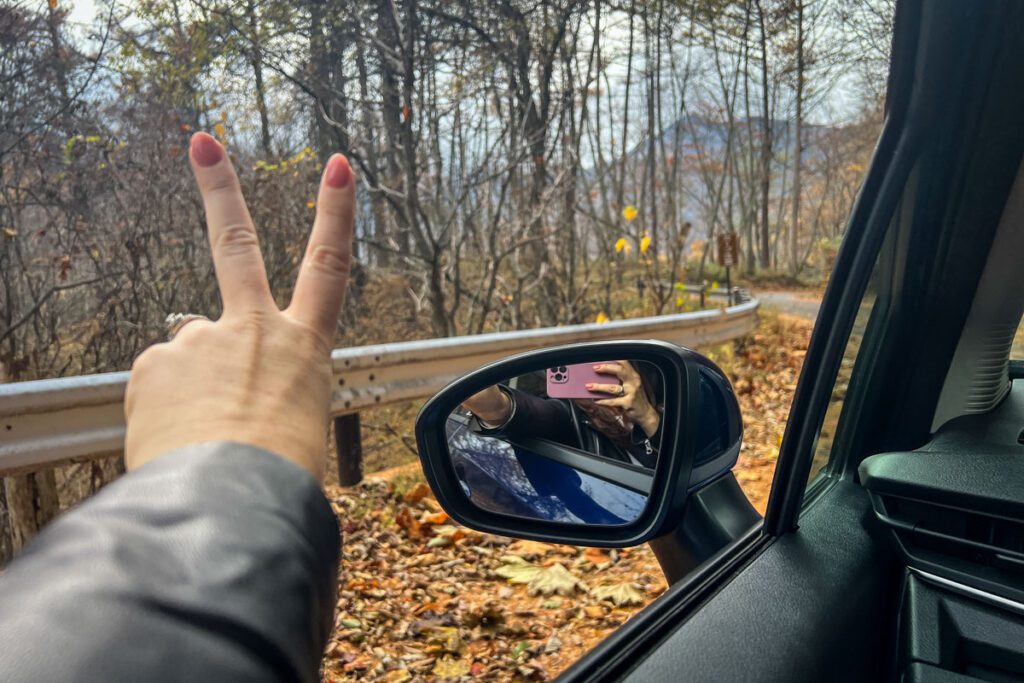
Here’s a handful of tips we learned when booking and driving our rental car in Japan. Be sure to read these over before your trip.
1. Make sure your luggage will fit
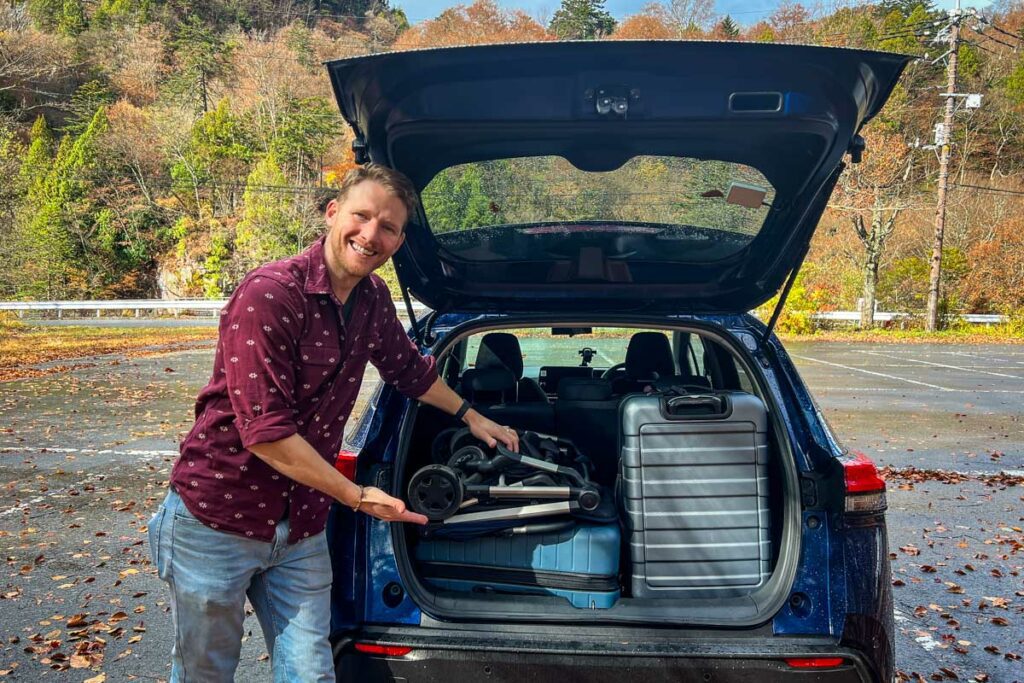
Most rental cars in Japan are small and compact and don’t have much trunk space.
Measure your luggage and double check the size of the trunk or back seat of the model you’re renting. We had to rent a larger vehicle (Nissan Note) because we had two large suitcases, a collapsible stroller, and two small packs.
2. Book a car with snow tires in the winter
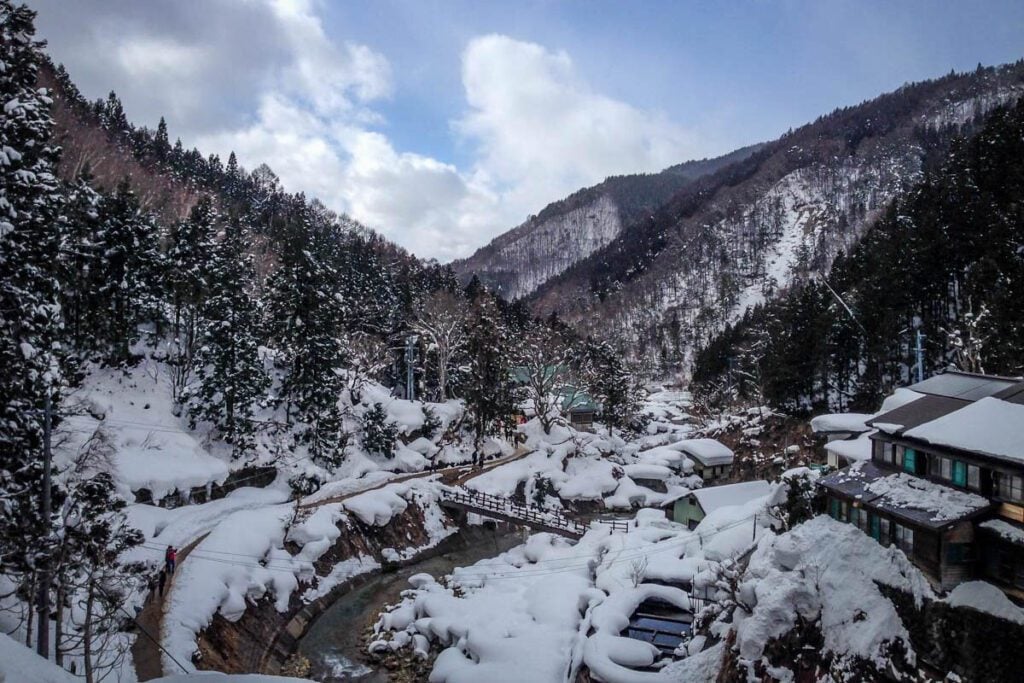
if you plan to drive in mountainous regions in the winter time, you’ll definitely want snow tires. The curvy roads in Japan are no joke, so make sure you are prepared and prebook snow tires.
On that note, be sure you do a little research before your trip to ensure the mountain roads you want to take are open. Some of the high altitude roads close in mid-autumn in preparation for the snow.
3. Know what a stop sign looks like
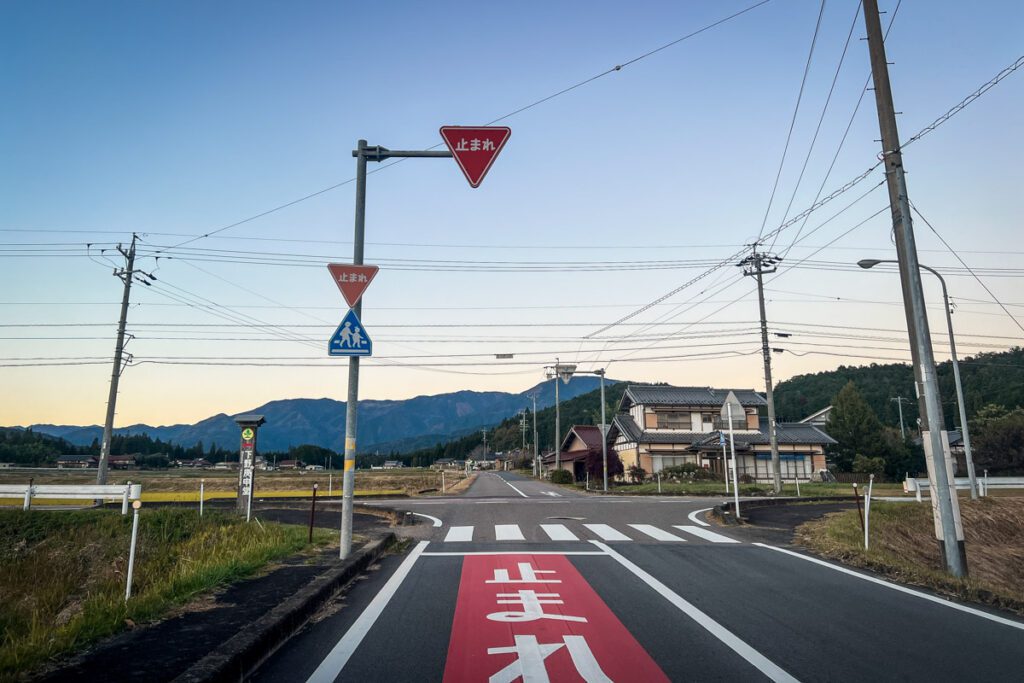
Japanese stops signs are a red triangle with white text “止まれ”. It looks like a red yield sign in North America, but it is definitely a stop sign in Japan.
4. Understand the speed limit
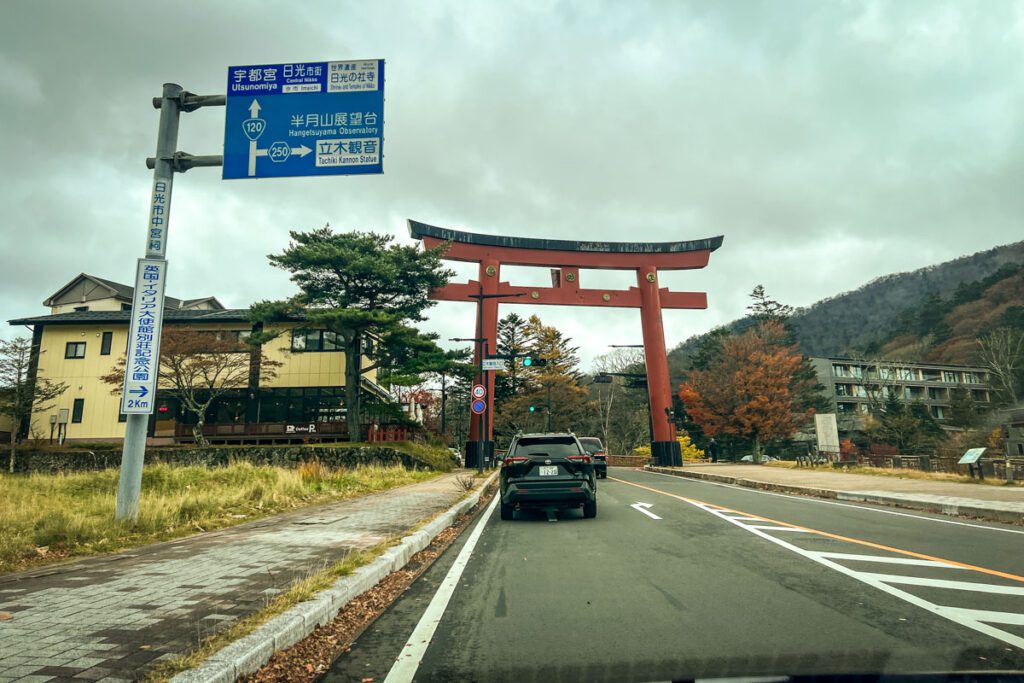
Japanese Speed Limit signs are similar to a European style speed limit sign which shows a number (in Km/h) with a red circle border. When there is no speed limit sign present, the speed limit is 100 km/h on expressways and 60 km/h on ordinary roads.
Most expressways have adjustable speed limit signs where the number is lit with lights and can be changed depending on construction or weather.
You may notice while driving that many people don’t stick to the speed limit. Our advice is not to speed in a foreign country, but if you do, keep it under 20 km/h over the set speed limit.
There are speed cameras everywhere. And if you get caught going 30 km/h+ over in Japan, you could be punished with jail time.
5. Be prepared to fill up gas
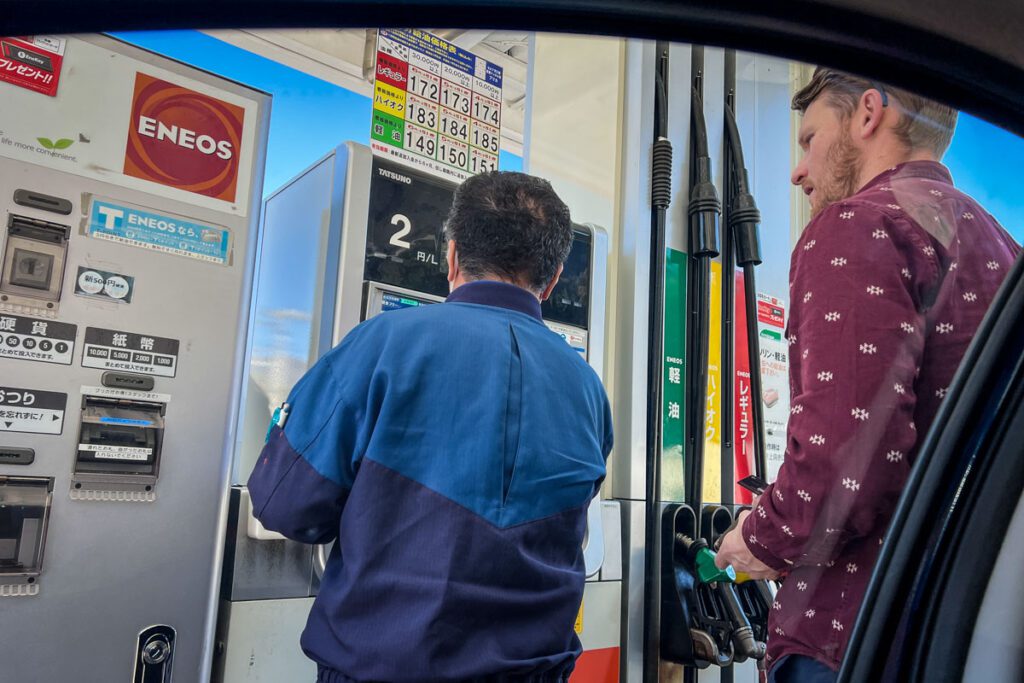
Gas stations in Japan are full service, so you don’t need to get out of your car. They will help you park, pump your gas, and wash your windows.
Be aware that gas stations might have weird hours and are not always open in the countryside. We found that most were closed on Sundays in rural areas.
When returning your car, you are required to fill up your gas tank back to full at a gas station close to the rental car company. Also, you have to bring the receipt when you drop off the car to show where you filled up, so don’t forget it!
6. Reverse into parking spaces

Everyone seems to reverse into parking spaces in Japan, so if you want to follow suit, practice your 90-degree back-in.
7. Don’t miss Japanese rest stops

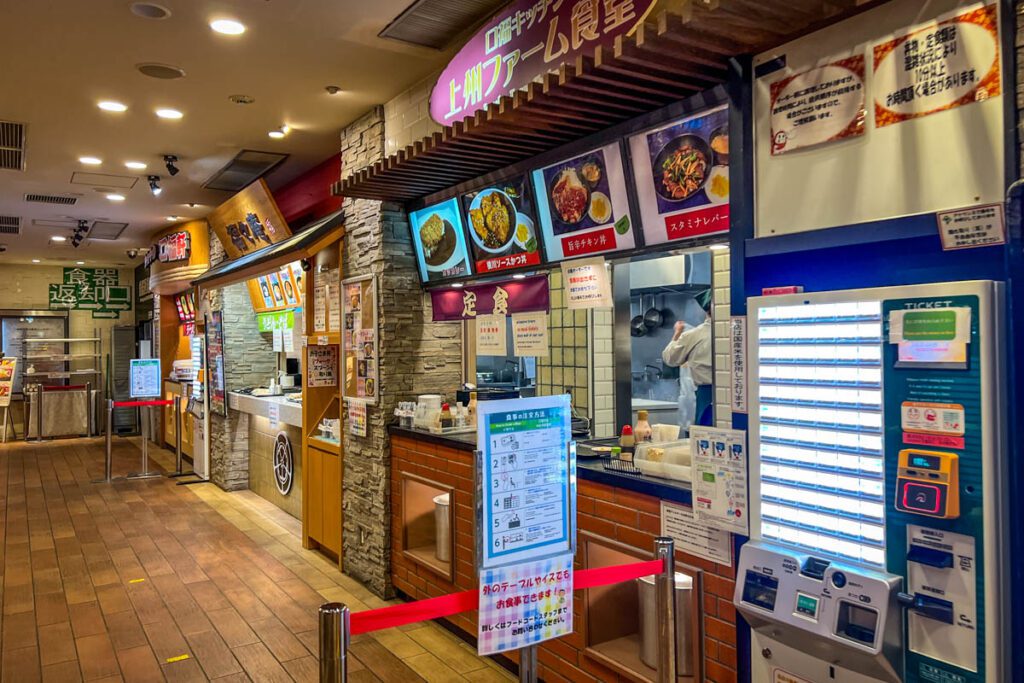
In general, Japanese rest stops are pretty amazing. We went to a couple that were almost like a mini food court at a mall. They have tons of food options, convenience stores and, of course, restrooms.
To order food, you’ll most likely pick what you want from a kiosk which will print a ticket that you will hand to the chef.
We were impressed to also find children’s cups, bowls, and utensils at the rest stops. There is also free drinking water and hot or cold green tea available.
8. Understand stickers on Japanese cars
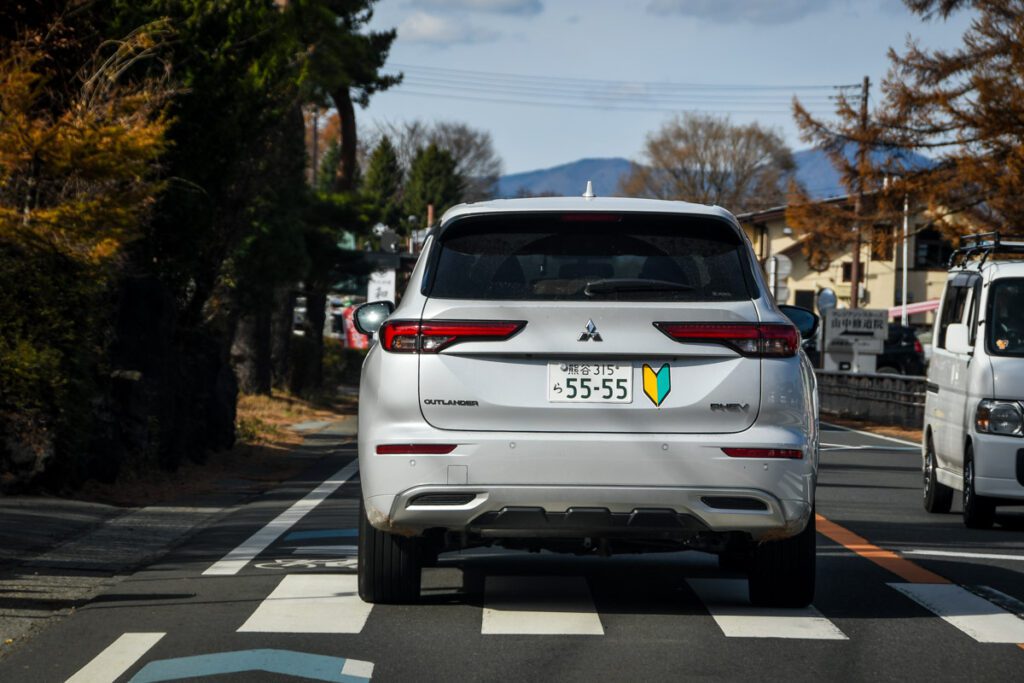
When driving in Japan, you may notice some cars have various magnetic stickers on the back or front of the vehicle. These are used to denote something special about the driver so that others are aware and can adapt accordingly.
Here are some of the more common stickers you might see around Japan:
- New Driver
- Elderly Driver
- Disabled Driver
- Hearing Impaired Driver
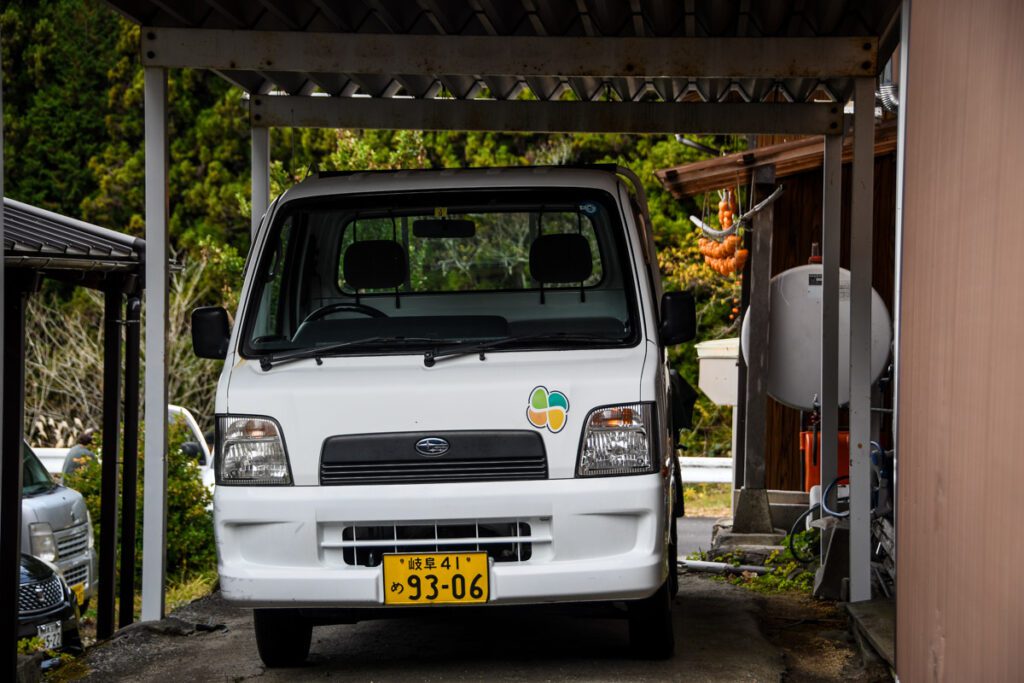
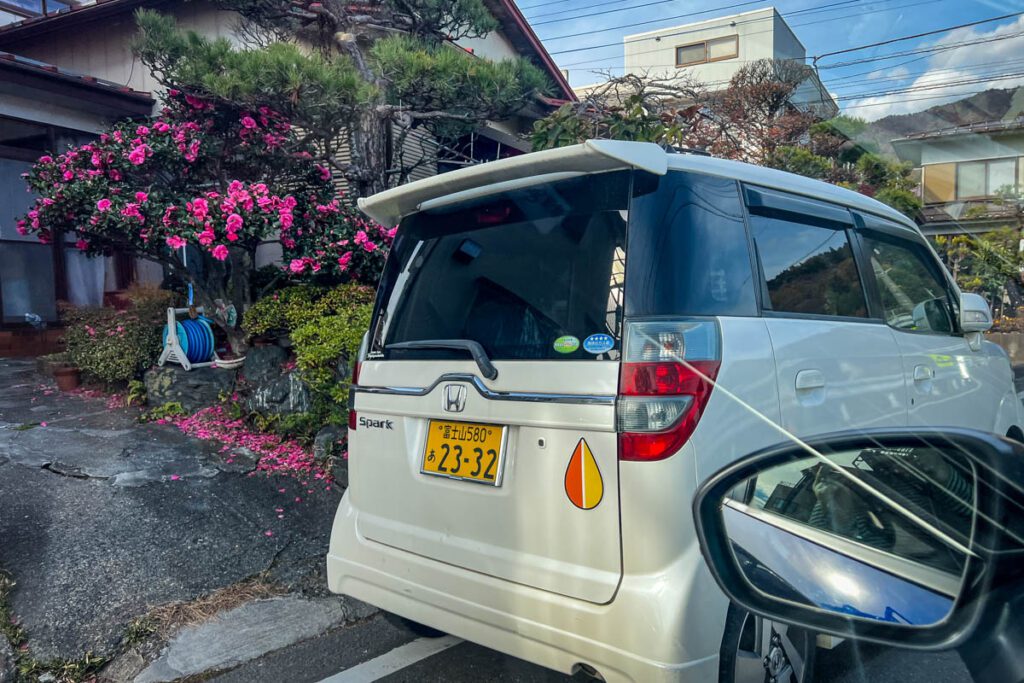
Check out this article for more info on each symbol and the design.
We think this is a great system and should be implemented in other places around the world. We also got to thinking, “Why don’t rental cars have the ‘New Driver’ sticker…”
9. Renting an ETC Card for tolls in Japan is essential
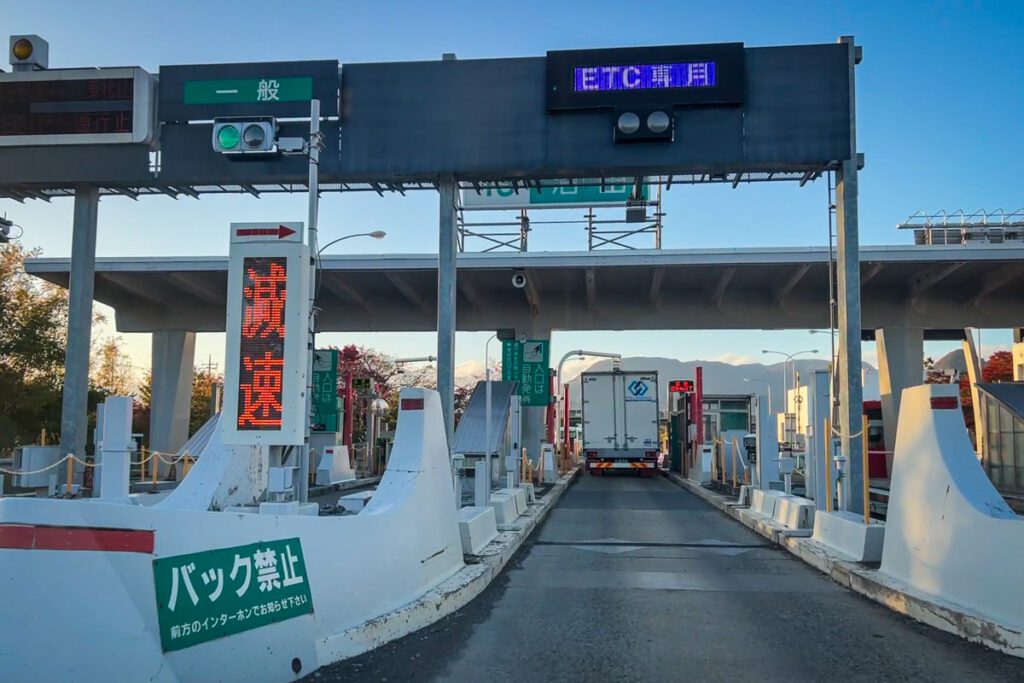
There are many tolls in Japan and it is hard to avoid them if you want to get to places quickly. You can either pay them manually with cash or credit card, or use the drive by lane with an ETC card.
We recommend renting an ETC (Electronic Toll Collection) card from your rental car company. It cost us around $2 USD to rent the card and it gets inserted into your car’s computer system.
This card will sense when you drive through a toll and charge you the appropriate amount. When you return your car, you’ll pay the total fee for all the tolls you used.
Using an ETC Toll
The Japanese ETC tolls were some of the easiest tolls we have ever encountered while traveling.
When approaching a toll, there will be loads of signs telling you there is one coming up. File into the correct ETC lane denoted by a purple “ETC” and travel at 20 km/h. The toll will sense your car, make a “dinging” noise, and lift the arm of the gate for you to pass through.
Then when exiting the toll, follow the same steps, but this time your car will ding and tell you the amount that is charged for the toll.
FAQs about car rentals in Japan
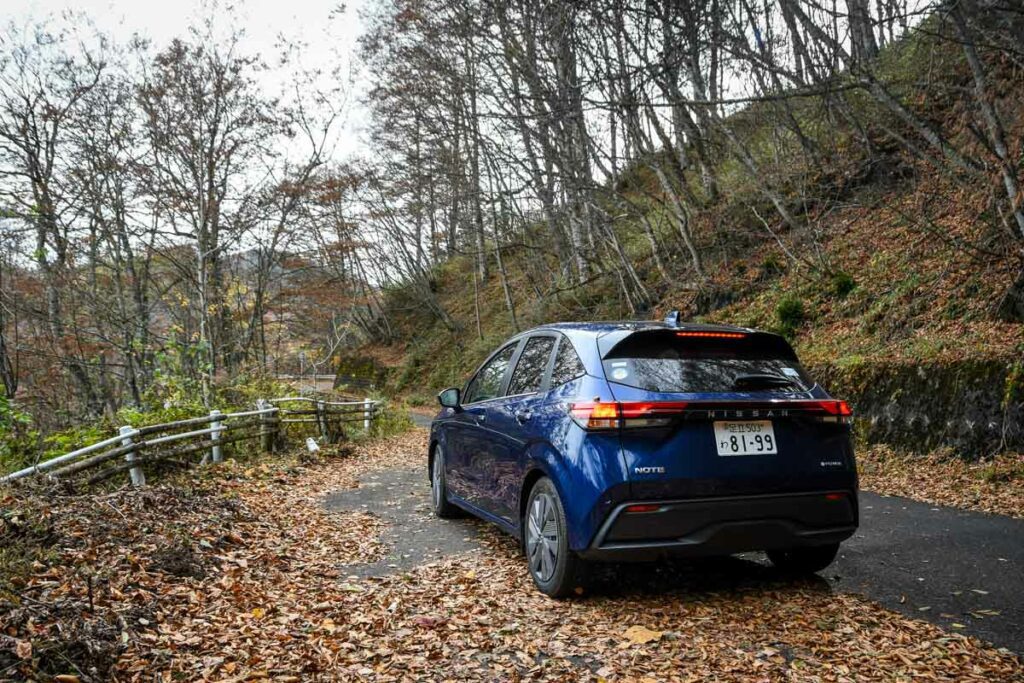
Still have questions about renting a car in Japan? We’ve got answers!
Is it safe to rent a car in Japan?
Yes, Japan is a very safe country to travel in and rent a car. We felt safe and welcomed everywhere we traveled in Japan.
What’s the cheapest rental car company in Japan?
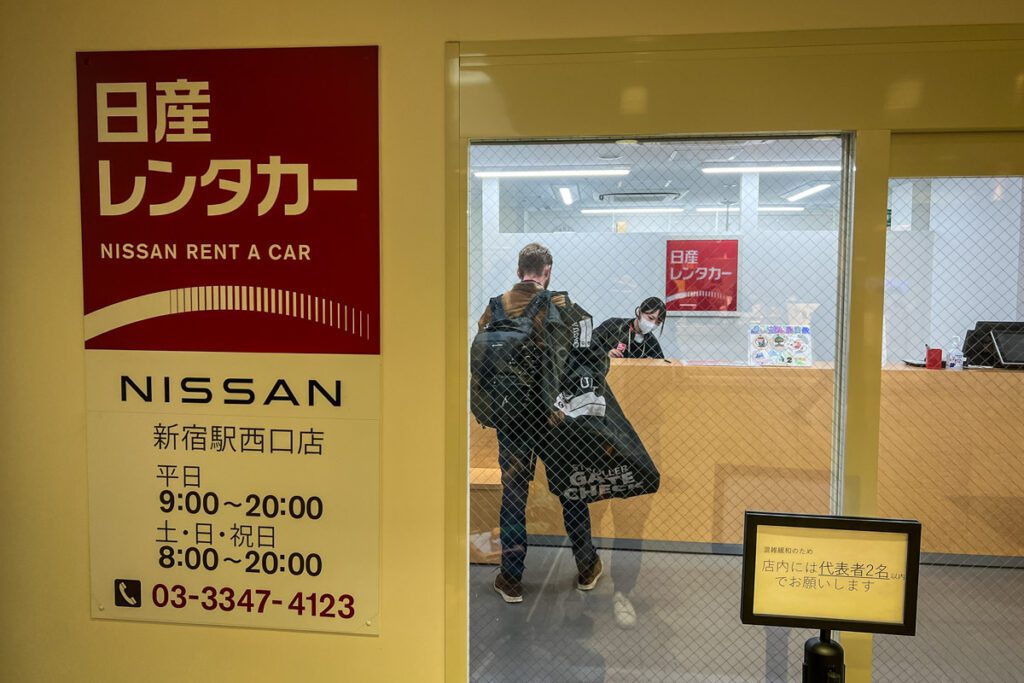
Most of the car rental companies in Japan have similar prices for each size of vehicle. We found that on average, Nissan Rent a Car is slightly cheaper than the rest, but check for yourself at Booking.com.
How much does gas cost in Japan?

As of January 2024, the average gasoline price in Japan is 175 Yen/Liter or $1.21 USD/Liter.
That’s about $4.58 USD/gallon.
How much are tolls in Japan?
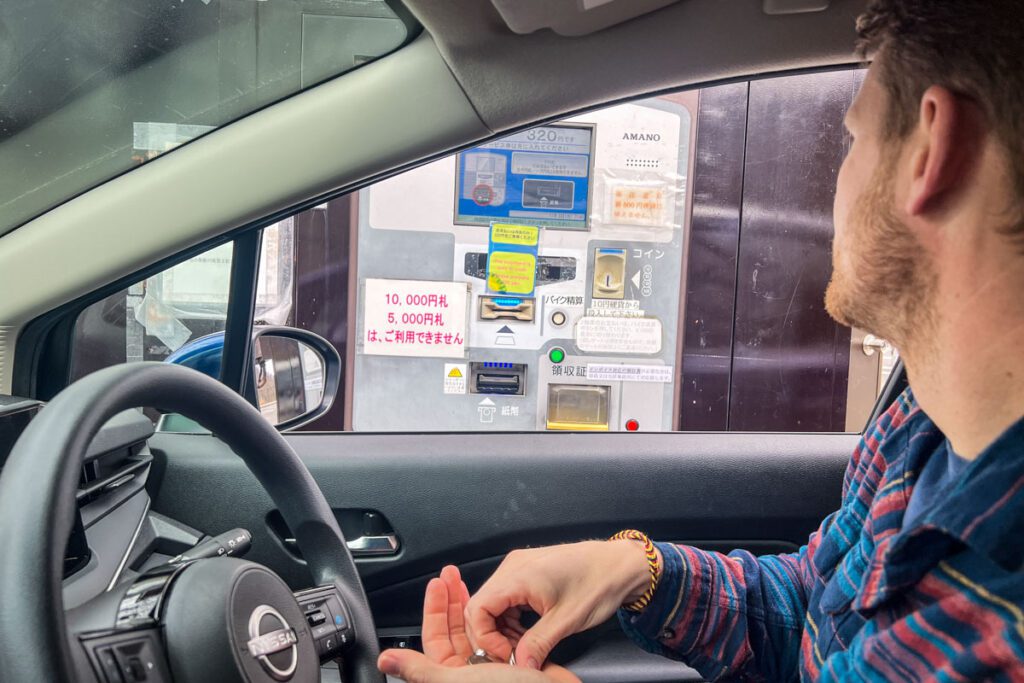
Each toll varies quite a bit and there’s a good chance you won’t know the total cost until you exit the tollroad.
We had our rental car for 15 days, drove through mountainous regions, and passed through a lot of tolls. Our most expensive toll was ¥4,330 (around $30 USD) for a long stretch on an expressway.
In comparison, if you drive from Tokyo to Kyoto via the expressway, it will take you about 6 hours and cost around ¥10,000 ($68 USD) in tolls.
When we returned the car, our total toll fee was about ¥180,000 (around $125 USD) for 2 weeks of exploring Japan in our rental car.
Plan your trip to Japan
After 3 trips (and counting!), we’ve fallen head over heels for Japan—and we’ve created TONS of resources to help you plan your dream trip. Start with our Ultimate Japan Travel Guide and be sure to check out these helpful articles:
- First time? Our Japan Trip Planner walks you through everything you need to know.
- Use our Japan Rail Pass guide to determine if getting a train pass is optimal for your trip.
- Here’s our curated list of the best things to do in Japan—from iconic sights to once-in-a-lifetime experiences.
- Not sure where to go? Our Japan itinerary ideas will help you map it all out.
- Foodies, rejoice! This guide to what to eat in Japan will have you drooling before you land.
- This guide to what to wear in Japan (and what not to wear) will help you blend in.
- Use our ultimate Japan Packing List to make sure you don’t forget anything.
- Before you go, brush up on these essential Japan travel tips (including major do’s and don’ts!).
- Avoid awkward moments by brushing up on Japanese etiquette.
Still have questions? Drop us a comment—we LOVE helping travelers plan unforgettable trips to Japan!
Perfect Japan itinerary
Want the perfect itinerary planned for you?

If you don’t have a ton of time to spend planning your Japan itinerary (or you just don’t find travel planning fun), we’ve got something you might be interested in…
We created the ultimate done-for-you Japan itinerary that is packed full of all sorts of tips we’ve gathered from 3 trips to Japan as well as literally hundreds of hours of research (no exaggeration).
We have both an off-the-beaten path route as well as a classic itinerary that hits the top attractions (perfect for your first visit to Japan!).
Don’t miss your chance to grab our Japan packing list!
This FREE PDF download includes everything you’re going to want to pack for your Japan trip, including what NOT to bring, plus tons of insider tips!
Just enter your email and we’ll immediately send you access instructions!
Save this article on Pinterest for later!
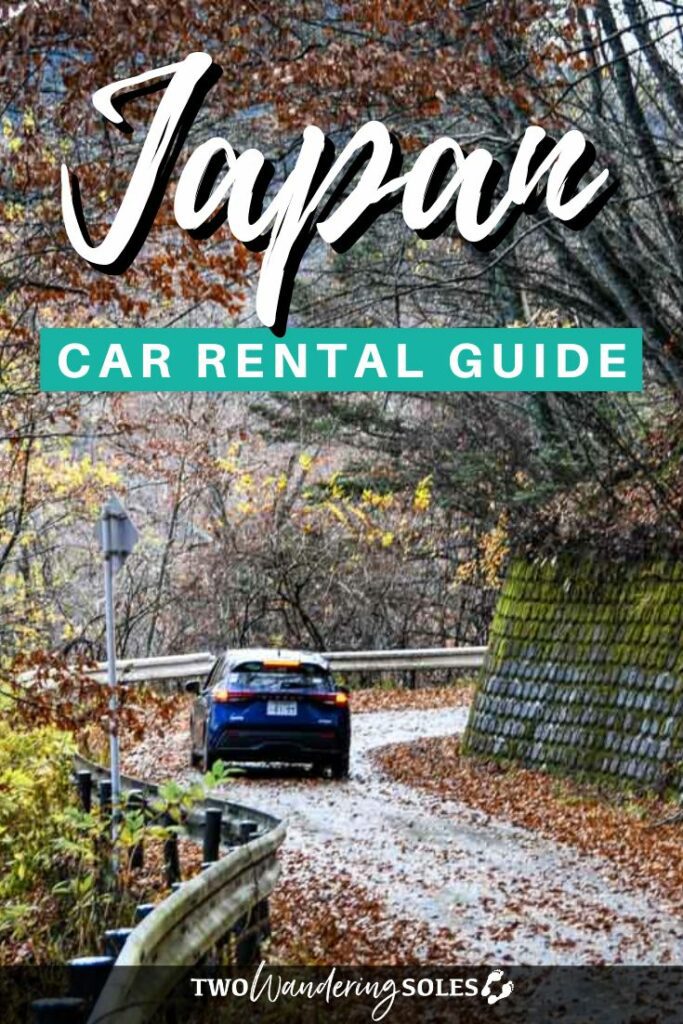

We want to hear from you!
Do you have any more questions about renting a car or driving in Japan? Let us know in the comments below and we’ll do our best to get back to you!



Very useful info, really boosts my confidence in the adventures ahead! Thanks for taking the time to do this excellent write-up.